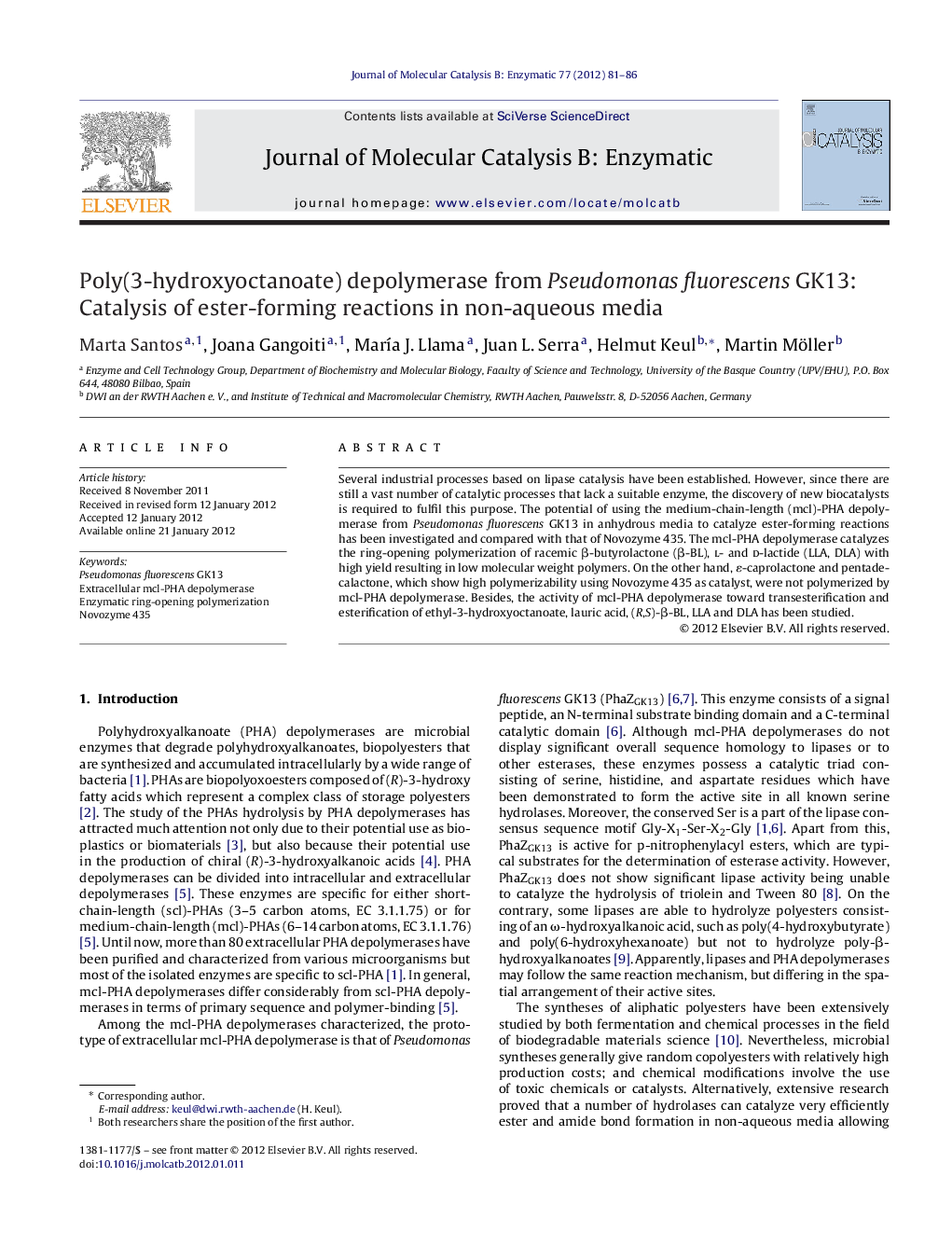| Article ID | Journal | Published Year | Pages | File Type |
|---|---|---|---|---|
| 70253 | Journal of Molecular Catalysis B: Enzymatic | 2012 | 6 Pages |
Several industrial processes based on lipase catalysis have been established. However, since there are still a vast number of catalytic processes that lack a suitable enzyme, the discovery of new biocatalysts is required to fulfil this purpose. The potential of using the medium-chain-length (mcl)-PHA depolymerase from Pseudomonas fluorescens GK13 in anhydrous media to catalyze ester-forming reactions has been investigated and compared with that of Novozyme 435. The mcl-PHA depolymerase catalyzes the ring-opening polymerization of racemic β-butyrolactone (β-BL), l- and d-lactide (LLA, DLA) with high yield resulting in low molecular weight polymers. On the other hand, ɛ-caprolactone and pentadecalactone, which show high polymerizability using Novozyme 435 as catalyst, were not polymerized by mcl-PHA depolymerase. Besides, the activity of mcl-PHA depolymerase toward transesterification and esterification of ethyl-3-hydroxyoctanoate, lauric acid, (R,S)-β-BL, LLA and DLA has been studied.
Graphical abstractFigure optionsDownload full-size imageDownload as PowerPoint slideHighlights► mcl-PHA depolymerase from P. fluorescens GK13 as catalyst in anhydrous media. ► Non-substituted and substituted 4-membered lactones are polymerized by the enzyme. ► The enzyme catalyzes the polymerization of lactides in d- and l-configuration. ► In contrast to Novozyme 435, ɛ-caprolactone and pentadecanolide are not polymerized.
